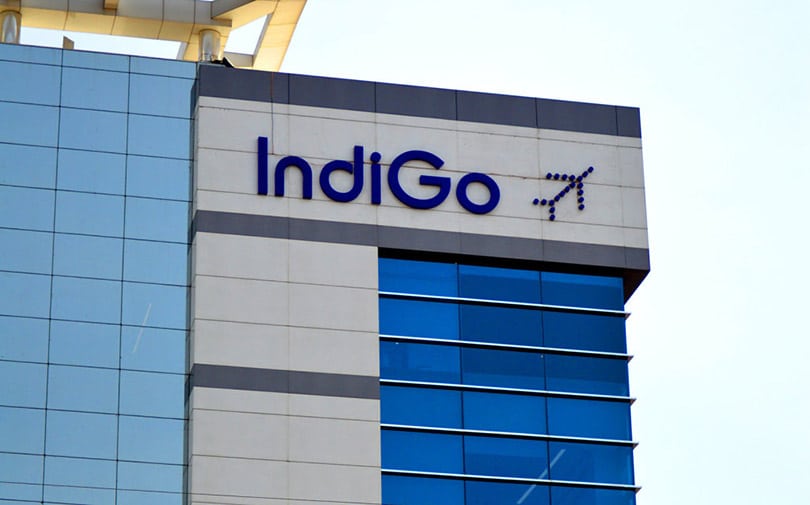Today, in our Business Model series, you’ll learn in depth about the Business Model of Indigo, a major airline based out of India.
Indigo, a prominent player in the competitive market of air travel, has consistently managed to win the hearts of millions of passengers worldwide. With its focus on operational efficiency and customer-centric approach, the company has carved a niche for itself in a short period. This blog post aims to shed light on the business model of Indigo, using Alexander Osterwalder’s Business Model Canvas (BMC) as a framework. We will also introduce the founders of the company and discuss the story of how and why Indigo came into existence.
Founders and the Indigo Story
Indigo, officially known as InterGlobe Aviation Limited, was founded in August 2006 by Rahul Bhatia and Rakesh Gangwal. Rahul Bhatia, an Indian entrepreneur, is the co-founder and the Group Managing Director of the InterGlobe Enterprises. Rakesh Gangwal, an Indian-American entrepreneur, has an impressive resume, having served as the CEO of US Airways and holding executive positions at Air France and United Airlines.
The idea behind Indigo was conceived during a casual conversation between Bhatia and Gangwal, where they discussed the potential of the Indian aviation market. The founders were driven by the mission to create an airline that could deliver high-quality services at a low cost, making air travel accessible to the masses. As a result, Indigo was born, and the rest is history.
Now, let’s dive into the details of the Indigo business model using the Business Model Canvas.
Alexander Osterwalder’s Business Model Canvas
The Business Model Canvas (BMC) is a strategic management tool developed by Alexander Osterwalder to help businesses visualize and understand their business model in a comprehensive manner. It consists of nine building blocks, each representing a critical aspect of a business model. These blocks are:
- Customer Segments
- Value Proposition
- Channels
- Customer Relationships
- Revenue Streams
- Key Resources
- Key Activities
- Key Partnerships
- Cost Structure
In the following sections, we will analyze each of these building blocks for Indigo’s business model.
- Customer Segments
Indigo primarily caters to two distinct customer segments:
a. Budget-conscious travelers: A significant portion of Indigo’s target market includes passengers seeking affordable air travel options without compromising on safety and punctuality. The company focuses on offering competitive fares and value-added services to attract this customer segment.
b. Business travelers: Another key customer segment for Indigo comprises business travelers who require frequent and reliable air travel services. Indigo’s extensive network, on-time performance, and efficient services make it an attractive option for this segment.
- Value Proposition
Indigo’s value proposition is centered around providing an affordable, reliable, and efficient air travel experience. The company achieves this through the following aspects:
a. Low fares: Indigo’s primary value proposition is offering low fares without compromising on service quality. The company’s efficient operations and cost management strategies enable it to pass on the benefits to the customers in the form of competitive ticket prices.
b. Punctuality: Indigo is known for its on-time performance, which is critical for both budget-conscious and business travelers. The company has consistently ranked among the top airlines in terms of punctuality, garnering a strong reputation in the market.
c. Hassle-free experience: Indigo places a strong emphasis on providing a hassle-free travel experience for its passengers. This includes seamless online booking and check-in processes, responsive customer service, and a clean and comfortable in-flight experience.
d. Extensive network: Indigo boasts an expansive network, covering numerous domestic and international destinations.
e. Fleet modernization: Indigo maintains a young and fuel-efficient fleet of aircraft, which contributes to its operational efficiency and environmental sustainability. A modern fleet also enhances passenger safety and comfort.
f. Ancillary services: Indigo offers a range of ancillary services to enhance the overall travel experience for passengers. These services include priority check-in, seat selection, and in-flight meals, allowing customers to tailor their journey according to their preferences.
- Channels
Indigo employs various channels to distribute its products and services to customers. These include:
a. Online channels: Indigo’s website and mobile app serve as the primary channels for customers to search, book, and manage their flights. The company also leverages online travel agencies (OTAs) and meta-search engines to reach a wider audience.
b. Offline channels: Traditional travel agents and airport ticket counters also serve as distribution channels for Indigo. These channels cater to customers who prefer personal assistance or are not comfortable with online bookings.
- Customer Relationships
Indigo aims to establish strong customer relationships through a combination of personalized service, effective communication, and responsiveness to customer needs. Key aspects of its customer relationship strategy include:
a. Customer service: Indigo maintains a dedicated customer support team available through multiple channels, including phone, email, and social media. The company’s emphasis on prompt and effective customer service helps build trust and loyalty.
b. Loyalty program: Indigo’s frequent flyer program, ‘6E Rewards’, encourages customer retention by offering reward points, priority services, and exclusive discounts.
c. Personalization: Indigo’s online platforms allow customers to personalize their travel experience by selecting preferred seats, meals, and other add-on services.
- Revenue Streams
Indigo generates revenue through various streams, including:
a. Ticket sales: The primary source of revenue for Indigo is the sale of air tickets. Low fares and high-quality services help drive demand for the airline’s services.
b. Ancillary services: Indigo offers a range of add-on services, such as baggage allowance, seat selection, and in-flight meals, which contribute to its overall revenue.
c. Cargo services: Indigo also generates revenue from cargo operations, capitalizing on its extensive network and operational efficiency.
d. Advertising and partnerships: The airline earns revenue from in-flight and airport advertising, as well as partnerships with hotels, car rental companies, and other travel-related businesses.
- Key Resources
Indigo’s key resources include:
a. Fleet: Indigo’s fleet of modern and fuel-efficient aircraft is crucial to its operations and value proposition.
b. Human resources: The company’s skilled workforce, including pilots, cabin crew, ground staff, and management, plays a vital role in delivering a high-quality travel experience.
c. Airport slots and operating rights: Airport slots and operating rights are essential for Indigo to maintain its extensive network and on-time performance.
d. Technology infrastructure: Indigo’s technology infrastructure, including its website, mobile app, and reservation system, supports its online and offline sales channels and customer service operations.
- Key Activities
Indigo’s key activities revolve around the efficient management of its core airline operations. These include:
a. Flight operations: Ensuring the safe, punctual, and efficient operation of flights is critical for Indigo’s success.
b. Network planning and management: Indigo continuously evaluates and optimizes its network to cater to customer demands and market trends.
c. Marketing and sales: The company invests in marketing and sales efforts to attract and retain customers, promote brand awareness, and drive demand for its services.
d. Customer service: Indigo places a strong emphasis on providing excellent customer service to build long-term relationships with its passengers.
- Key Partnerships
Indigo collaborates with various partners to enhance its value proposition and streamline operations. Some of these key partnerships include:
a. Aircraft manufacturers: Indigo partners with aircraft manufacturers like Airbus to maintain and expand its fleet. These partnerships ensure access to advanced and fuel-efficient aircraft, contributing to the company’s operational efficiency.
b. Airport authorities: Collaborating with airport authorities is crucial for Indigo to secure airport slots, operating rights, and infrastructure access.
c. Maintenance, Repair, and Overhaul (MRO) providers: Partnerships with MRO providers ensure the regular maintenance and upkeep of Indigo’s fleet, enhancing safety and efficiency.
d. Distribution partners: Indigo works closely with online travel agencies (OTAs), meta-search engines, and traditional travel agents to broaden its distribution channels and reach a wider customer base.
e. Marketing and advertising partners: The airline collaborates with marketing and advertising agencies to create promotional campaigns and increase brand visibility.
- Cost Structure
Indigo’s cost structure comprises various elements, including:
a. Aircraft acquisition and leasing: The purchase or leasing of aircraft represents a significant cost for the company.
b. Fuel: As with all airlines, fuel expenses constitute a major portion of Indigo’s operating costs.
c. Salaries and employee benefits: The company’s workforce, including pilots, cabin crew, ground staff, and management, also contributes to its cost structure.
d. Airport fees and charges: Indigo incurs costs related to airport slots, landing fees, and other airport-related charges.
e. Maintenance and repair: Regular maintenance and repair of the fleet is necessary to ensure operational efficiency and safety, adding to the company’s costs.
f. Sales and distribution: Marketing, advertising, and distribution channel costs also contribute to Indigo’s cost structure.
g. General and administrative expenses: Day-to-day operational and administrative expenses, such as office rent, utilities, and insurance, are also part of the cost structure.
Indigo’s business model, as analyzed through Alexander Osterwalder’s Business Model Canvas, reveals a comprehensive approach to delivering value to customers in the form of low fares, punctuality, and a hassle-free experience. The company’s efficient operations, extensive network, and focus on customer service have helped it establish a strong presence in the competitive aviation market.
The success story of Indigo demonstrates the importance of understanding and optimizing all aspects of a business model. By effectively managing its key resources, activities, partnerships, and costs, Indigo has managed to carve a niche for itself in the aviation industry and continues to thrive in the face of stiff competition.
Did you know? Startups like to use our office space in Bangalore.
Learn about our coworking space on YouTube where we talk about a variety of topics including entrepreneurship, business and life.




